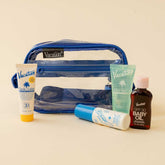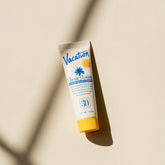FREE U.S. STANDARD SHIPPING ON $125+
FREE U.S. STANDARD SHIPPING ON $125+
Swimwear
Lifestyle
WANT VIP ACCESS TO ALL THINGS?
join the waitlistAccessories
WHEN TO START GARDENING
April 18, 2021 3 min read


A lot of vegetables are what are known as “cool season” veg and can be planted 2-4 weeks before the last spring frost. In other words--late February early March. You can plant them up into late April early May if you want to harvest them in May and June. It all depends on your soil temperature. Now, you can buy a soil thermometer from your local nursery or home improvement store, or simply take this tip from an avid gardener: start planting when you can stick your pointer finger all the way down into the soil without freezing your fingers.

Peas
Lettuces
Kale
Arugula
Radishes
Spinach

Beets
Broccoli
Brussels sprouts
Cabbage
Carrots
Cauliflower

Tomatoes
Squash
Cucumber
Melons
Beans
Corn

If you are planning on planting new fruit trees, now is a good time to get them in the ground (though top tip: planting them in early fall is even better!). You can plant berries too: raspberries, blackberries, blueberries, etc., as soon as the danger of frost is gone.
There are two types of flowers: annuals (which bloom for one year and then die) and perennials (which will come back next year). If you live in the Mountain West like we do, you don’t want to plant any annuals until around Mother’s Day. It’s just too cold and the danger of frost is still present. You don’t want to spend the money on beautiful flowers only to have them die in a late April frost. Perennials are super tough and can be planted as soon as the ground is warm enough to get a shovel in. Be sure and give them a good drink of water--even if you think it’s too cold. It will give them a good start in life.

If you’re a newbie at gardening, never fear: you’ve got this. With that in mind, it’s always a good idea to ask a neighbor or family member who gardens in your area for advice. Chances are they’d love to pass on their wisdom. Hey--we do, too! So here are five of our best words of wisdom for beginning your garden:
1. Check your soil. You want to give your seeds and plants their best start in life. You can send it out for a soil test or try it yourself with these DIY tips from Farmer’s Almanac. Add compost, gardening soil, etc. if you need it.
2. Set up your watering system first. It’s so disappointing to go on vacation for a day or two just to come home and find all of your crops fried to a crisp. Make sure the area where you are planting gets hit by sprinklers or set up a drip system for optimal water conservation.
3. Follow the sun. Some veg want sun. Others are shade-lovers. Make sure you’re not planting tomatoes in a mostly shady area (they are sun-lovers through and through) and don’t put lettuce in full sun (they’ll crisp right up). Check the packaging for seeds and little plants--they won’t steer you wrong.
4. Plant what you will eat. That being said--it’s never a bad idea to try something new. But make the bulk of your garden something you LOVE to eat.
5. Don’t give up. Really. If you fail at tomatoes one year--ask a neighbor about what you might have done wrong and try again. Chalk it up to experience points, pull on your gardening boots, and try again. You can do it!
Gardening is so good for you. Not just because you’ll be eating fresh vegetables and fruit, but being out in nature is so good for your mental and emotional health. Whether it’s a couple of pots on the balcony of an apartment complex or an allotment plot, or your own garden, it’s always a good idea to dive into gardening.
We can’t wait to see what you’ve grown!
Leave a comment
Comments will be approved before showing up.
your cart is empty
Add style to your summer wardrobe



 Disney
Disney

 NCAA
NCAA Gift Card
Gift Card Shop All Products
Shop All Products

 New Arrivals
New Arrivals One Piece
One Piece Swim Bottoms
Swim Bottoms Men's Swim
Men's Swim Cover-Ups
Cover-Ups Maternity Swim
Maternity Swim New Arrivals
New Arrivals Tops
Tops Jumpsuits + Rompers
Jumpsuits + Rompers Dresses
Dresses Men's
Men's Best Sellers
Best Sellers Last Chance
Last Chance Skincare
Skincare Hats
Hats Bags
Bags Jewelry
Jewelry Swim Accessories
Swim Accessories

